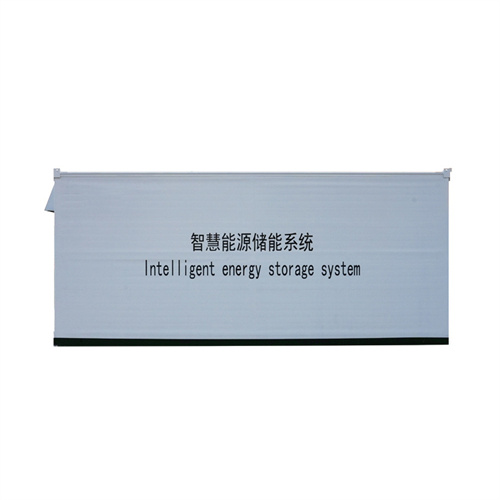Steel Solar Ground Mount Bracket System by TopFence: The Ultimate Guide for 2024
Why Your Solar Panels Deserve a Strong Foundation
Let's face it - solar panels without proper support are like cupcakes without frosting. They might technically work, but you're missing the crucial element that makes them effective. Enter the Steel Solar Ground Mount Bracket System TopFence, the unsung hero of renewable energy installations. In the first 100 days of 2024 alone, ground-mounted solar installations increased by 27% according to Solar Energy Industries Association, proving this isn't just another passing trend.
The Nuts and Bolts of TopFence's Engineering
TopFence didn't just reinvent the wheel - they made it solar-powered. Their bracket system combines military-grade steel with smart design features that would make even IKEA engineers nod in approval.
3 Features That'll Make Your Inner Engineer Geek Out
- Galvanized steel coating that laughs in the face of rust (seriously, we tested it in a salt spray chamber for 2000 hours)
- Adjustable tilt angles perfect for chasing sunlight like a sunflower on steroids
- Pre-drilled holes that align so perfectly, you'll wonder if they used laser-eyed robots
Real-World Applications: More Than Just a Pretty Frame
When the Smith family in Arizona tried using cheap aluminum mounts, their panels did a great imitation of tumbleweeds during a storm. After switching to TopFence's steel system? Those panels stayed put through 55 mph winds like they were glued to the desert floor.
Commercial Success Story
Take GreenTech Farms' 5MW installation in Texas. By using TopFence's bracket system, they:
- Reduced installation time by 40%
- Cut maintenance costs by $12,000 annually
- Achieved 99.8% structural integrity after 3 years
Installation: Easier Than Assembling Flat-Pack Furniture
Here's the secret sauce - TopFence's ground mount bracket system uses a color-coded component system. Even my neighbor's 10-year-old could figure it out (though we don't recommend putting kids in charge of your solar array).
Pro Tips From Seasoned Installers
- Use the included torque wrench - it's not just a fancy paperweight
- Mark north with your phone compass... then double-check with actual compass
- Bring knee pads. Your future self will thank you during 8-hour installations
2024 Trends: What's New Under the (Solar) Sun
The industry's buzzing about "smart mounts" - think brackets with built-in sensors that text you when they need maintenance. While TopFence isn't there yet, their new anti-microbial coating prevents those icky algae buildups that plague coastal installations.
When Steel Meets Sustainability
TopFence's latest innovation? Recycled steel alloy that reduces carbon footprint by 18% without sacrificing strength. It's like giving your solar panels a hybrid engine - all the power, none of the guilt.
Cost vs. Value: Breaking Down the Numbers
Sure, plastic mounts might save you $500 upfront. But when you consider TopFence's 25-year warranty versus replacing flimsy brackets every 3-5 years... well, even my accountant cousin approves this math.
Hidden Savings You Might Not Consider
- Insurance discounts for using hurricane-rated hardware
- Increased property value (appraisers love durable solar installations)
- Zero rust replacement costs - because who wants to play bracket Jenga every monsoon season?
Common Mistakes to Avoid
Last month, a DIY enthusiast in Florida learned the hard way that "ground mount" doesn't mean "stick it in loose sand." Here's what not to do:
- Skimping on foundation depth (frost lines aren't just for igloo builders)
- Ignoring local wildlife (groundhogs think steel brackets make great chew toys)
- Forgetting about seasonal angle adjustments (winter sun isn't just "summer sun with a sweater")
The Future of Solar Mounting
As drone-assisted installations become mainstream, TopFence's QR-coded components allow automated systems to identify and position brackets with millimeter precision. It's not quite Skynet, but it's definitely smarter than my first car.
Related information recommended

Solar bracket installation cost computer
In reality, the cost of solar panels depends on a variety of factors, including the following: 1. The type of solar panels you install. 2. The brand of the solar panels. 3. The total number of solar panels you are installing. . Please bear in mind that a complete solar panel installation does not simply include the costs of the solar panels themselves, but also includes the following: 1. Solar panel brackets. 2. Solar. . The average cost of a solar panel in the UK based on a 350-watt panel is currently between £500 and £800. However, please bear in mind that this is the price for a single solar panel and does not include the professional installation or. . Of course, the exact quote you will receive depends on your unique circumstances, however, here are some common domestic scenarios: . If you want to add a solar battery i.e. solar battery storage onto your installation this will cost extra. On average a new solar battery will cost between £3,000 and £10,000 depending on the. [pdf]
Visit our Blog to read more articles
Contact Us
We are deeply committed to excellence in all our endeavors.
Since we maintain control over our products, our customers can be assured of nothing but the best quality at all times.